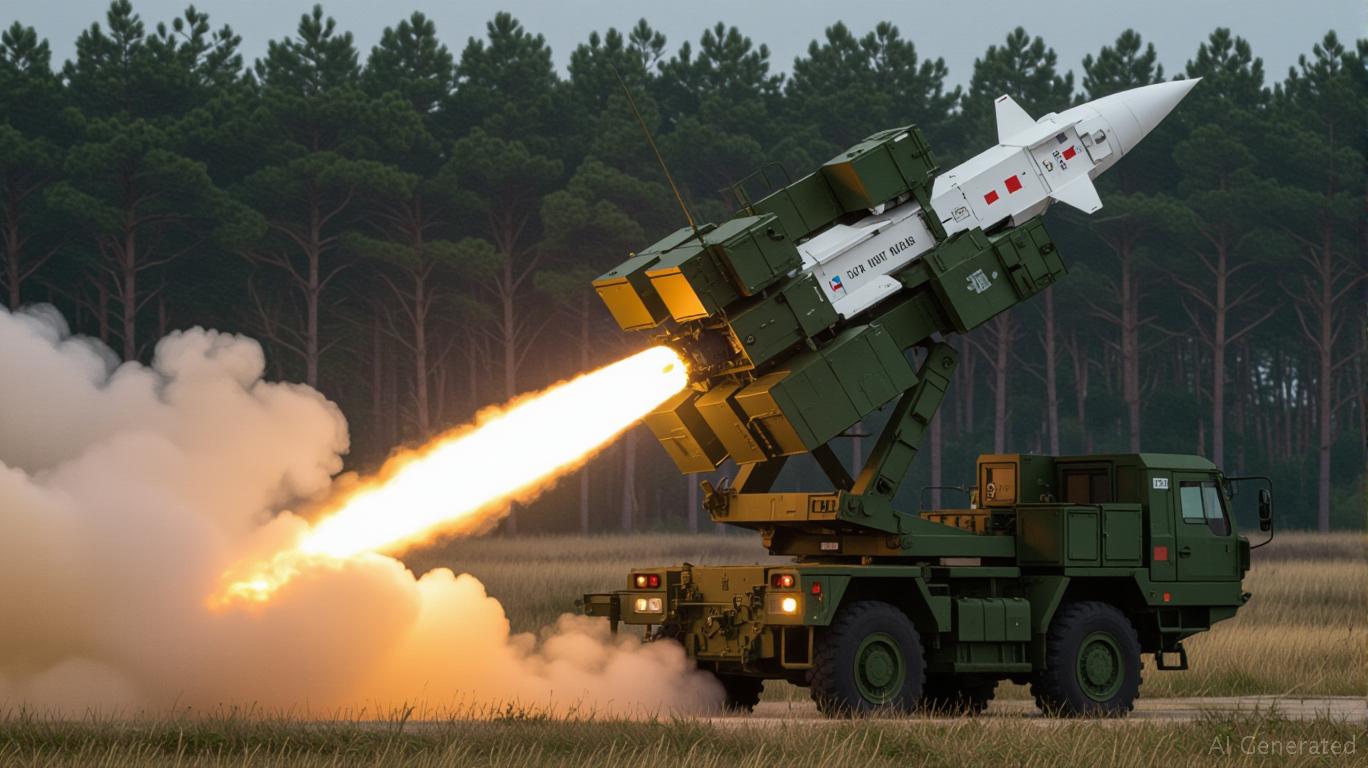The recent phone call between Ukrainian President Volodymyr Zelenskyy and former U.S. President Donald Trump on July 4 has reverberated throughout international defense markets. This pivotal conversation underscores a significant shift toward advanced air defense and drone technology, particularly in light of Russia’s relentless drone assaults on Kyiv—most notably, a staggering attack involving 539 drones and 11 missiles. As the need for sophisticated defense systems grows more urgent, investors are presented with a golden opportunity to engage with the partnerships emerging between U.S. tech firms and Ukraine’s military modernization efforts.
The Geopolitical Catalyst: Conflict, Sanctions, and Technological Demand
The backdrop to this escalating situation is stark. As the war in Ukraine enters a new phase marked by asymmetric warfare through drones and missiles, Kyiv’s urgent appeal for advanced air defense systems coincides with the temporary pauses in Patriot missile shipments from the U.S. This situation has created a strategic vacuum that European allies, such as Germany, are eager to fill. This dynamic presents a windfall for U.S. firms ready to supply crucial technology, either directly to Ukraine or through third-party buyers.
The Trump-Zelenskyy chat brought to light two pivotal areas of concern:
1. **Drone Defense Systems**: Ukraine’s ongoing battles against swarming Russian drones and missiles demand the development of robust air defense networks.
2. **Joint Defense Production**: Zelenskyy’s emphasis on collaboration with U.S. firms for drone technology signifies a move toward long-lasting partnerships.
Top Firms to Watch: From Missiles to Autonomous Drones
1. **Raytheon Technologies (RTX)**:
As the producer of the Patriot missile system, RTX is well-positioned to benefit from Ukraine’s focus on modernizing its air defense capabilities. Although recent political climates have led to U.S. aid pauses, potential European purchases—such as Germany’s expected procurement of Patriot systems—could mitigate short-term uncertainties. RTX showcases resilience within defense-heavy sectors, and geopolitical escalation may further enhance demand.
2. **AeroVironment (AVAV)**:
This smaller firm specializes in lightweight, portable drones, such as the Switchblade “loitering munition,” which Ukraine has effectively employed against Russian forces. With President Zelenskyy prioritizing partnerships in drone technology, AVAV’s cost-efficient systems are likely to see increased adoption in the evolving battlefield landscape.
3. **Lockheed Martin (LMT)**:
Lockheed’s strength in missile defense and hypersonics places it in an advantageous position amid broader U.S. military modernization efforts. Although production constraints on Patriot missiles (estimated at 500-650 units annually) represent a bottleneck, Lockheed’s involvement in next-generation air defense platforms could pave the way for collaborative ventures with Ukraine.
Why Now? Market Forces and Geopolitical Tailwinds
As Russia continues to launch record numbers of drone attacks, the demand for layered air defense solutions—from short-range systems to sophisticated radar networks—intensifies. Additionally, U.S. sanctions targeting Russian and Chinese entities involved in drone production (such as GVA Capital’s significant fine of $215 million) are nudging Ukraine and its allies toward Western suppliers, highlighting a crucial market shift.
This reengagement of EU nations, now surpassing U.S. military aid contributions ($85 billion vs. $76.6 billion), indicates that European buyers may look to procure U.S. technology to bridge gaps in their defense budgets. The symbiotic relationship between geopolitical events and defense market dynamics creates a fertile ground for investment opportunities.
Risks and Considerations
While the landscape brims with opportunities, it is fraught with uncertainties. Political volatility remains a concern, as Trump’s “America First” approach may lead to further aid pauses or fluctuations in sanctions, potentially disrupting supply chains. Additionally, production limits pose challenges; with Patriot missiles costing around $4 million each, scaling up capacity to meet increased demand is an intricate task. Moreover, the prospect of a ceasefire—though currently not in motion—could shift focus away from urgent defense spending if diplomatic resolutions come into play.
Investment Strategy: Play the Tech, Not the Conflict
For investors looking to navigate this complex environment, a focus on firms possessing scalable drone and air defense technologies alongside flexible partnerships is essential. Strategies to consider include:
– **Long-Term Growth**: Companies like AVAV and RTX present exposure to the global demand for drone defense, reaching beyond contracts tied solely to Ukraine. Historical data indicates that when AVAV’s quarterly revenue growth outpaced expectations, adopting a 60-day buy-and-hold strategy delivered a remarkable 31.53% compound annual growth rate from 2020 to 2025, despite considerable volatility.
– **Diversification**: Pairing defense stocks with cybersecurity firms—like Palo Alto Networks—can mitigate risks associated with data threats prevalent in modern warfare.
– **ETFs**: The iShares U.S. Aerospace & Defense ETF (ITA) offers broad exposure while helping to manage the risk associated with individual stocks.
This evolving narrative around the U.S.-Ukraine defense collaboration goes beyond mere survival; it represents a transformation in how we understand and engage with 21st-century warfare. Investors ready to champion firms capable of delivering agile and affordable solutions to air defense and drone countermeasures are likely to benefit as this conflict propels technological advancements forward.
Josh Nathan-Kazis is a pseudonym. This analysis is based on publicly available information and does not constitute personalized financial advice.


